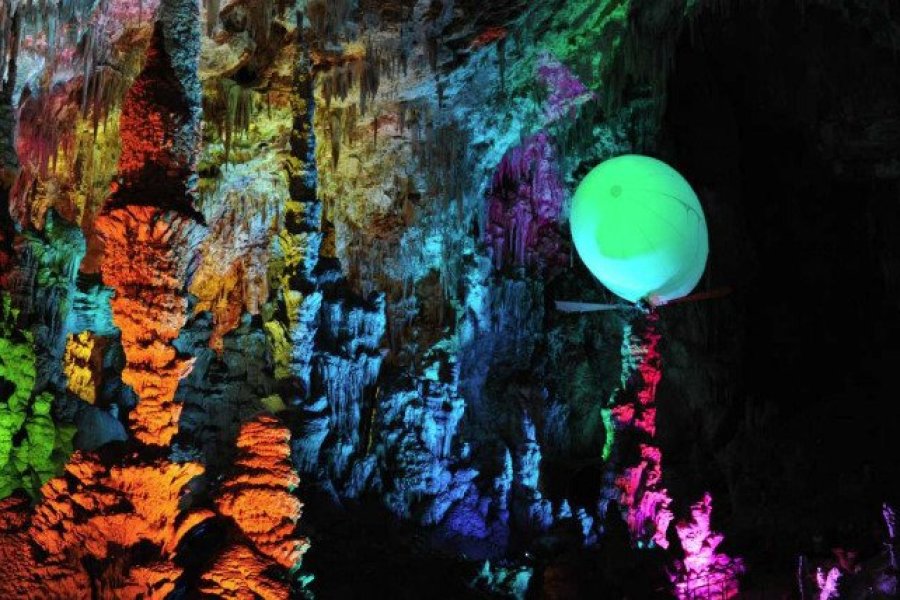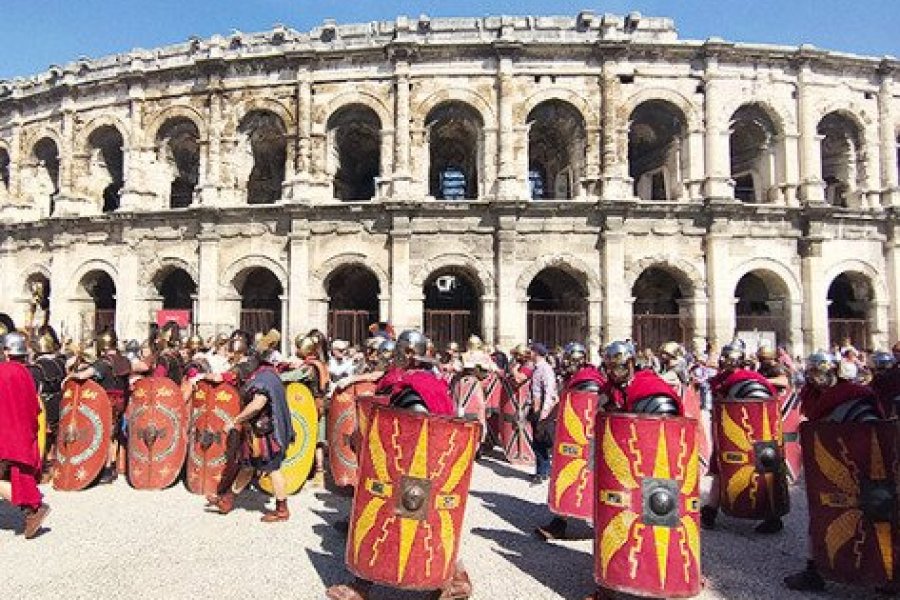
"Immersion": sound and light show at Grotte de la Salamandre
Recommended by Stéphan SZEREMETA
The Grotte de la Salamandre presents its latest show, "Immersion", a sensory experience combining sound and light in the Grande Salle. Audiences ...
Occitania, born from the merger of the former regions Languedoc-Roussillon and Midi-Pyrénées, has 13 departments. It spreads its natural and patrimonial treasures along its mountains, the Pyrenees which draw the border between France and Spain, its coastline which runs on more than 200 km from the Camargue to the Gulf of Lion, and in its lands which shelter dynamic, authentic and welcoming cities and villages.
A tourist guide to Occitania will not fail to remind you of the existence of a generous and preserved nature with, among others, two National Parks, six Regional Natural Parks and a Marine Park.
Among the jewels of Occitania, don't miss the Gorges du Tarn, the Petite Camargue, the Dordogne Valley, the Cevennes, Toulouse , the metropolis where life is good, as well as for its little sister Montpellier and its seaside neighbor, Sète, the City of Carcassonne, the Viaduct of Millau, the Pont du Gard...
Everywhere, the inhabitants, proud of their regional roots, are good-natured, spontaneous and welcoming, used to the Autan winds and the Tramontane, which you will not be able to escape.
It is also impossible not to discover the gastronomic and viticultural treasures of the region: foie gras, truffles, oysters, cheeses, anchovies, olives... not to mention the AOC Languedoc, AOC Corbières and AOC Côtes du Roussillon wines, the Côtes de Gascogne, Cahors and Gaillac wines, and the most famous of its spirits: Armagnac.
When to go to Occitania ? Even if the region has two high tourist seasons in summer for all outdoor sports and in winter for mountain sports (in the Pyrenees and Lozere in particular), it can be visited all year round, given the mild climate. However, you will find fewer establishments open in the off-seasons, the advantage being that prices drop as the number of tourists drops and you can enjoy the country at your own pace, meeting more authentic producers and tourism professionals who have more time to spend with you.
In summer, the coastline, from Grau du Roi and La Grande-Motte to Cerbère and Banyuls-sur-Mer, experiences mass tourism, with numerous hotels and campsites, as well as attractions and activities. The natural parks also see an influx of tourists in search of outdoor sports activities (hiking, rafting, mountain biking, canoeing, caving ...). The year is punctuated by festivals, meetings and village celebrations, depending on the season.
As for the main cities, Toulouse, Montpellier, Perpignan, Sète, Nîmes... they can be visited all year round: as long as you are not afraid of the crowds and the scorching temperatures which are less bearable in the city than in the countryside or on the coast.
Because of its immense surface area, the Occitanie region is subject to different influences and is divided between three climates. The coastline benefits from a Mediterranean climate (high sunshine, low thermal amplitudes, mild temperatures). The Occitan part of the Aquitaine basin is subject to an oceanic climate (a little less sunshine and stronger amplitudes). Finally, a mountain climate prevails in certain areas (Lozère, Cévennes, Pyrenees).

Recommended by Stéphan SZEREMETA
The Grotte de la Salamandre presents its latest show, "Immersion", a sensory experience combining sound and light in the Grande Salle. Audiences ...

Recommended by Tanguy REVAULT
From 05/03/2024 to 05/05/2024 : Nîmes is home to some of the best-preserved Roman monuments in the world. An ideal backdrop for the springtime "Journées Romaines". For 3 days, ...
When to go to Occitania ? Even if the region has two high tourist seasons in summer for all outdoor sports and in win...
Read more about it
Because of its immense surface area, the Occitanie region is subject to different influences and is divided between t...
Read more about it